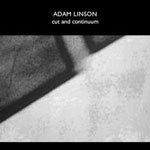Home » Jazz Articles » Multiple Reviews » Bassful Accusations: Adam Linson and Pierre-Yves Martel
Bassful Accusations: Adam Linson and Pierre-Yves Martel
 |  |
Adam Linson Cut and Continuum Psi 2006 | Pierre-Yves Martel Engagement & Confrontation Ambience Magnetiques 2006 |
Everybody knows the hoary old joke about natives on an island with endless drumming, terrified of it stopping and the bass solo beginning. Those natives would certainly scratch their heads over these two solo bass albums.
The genre most likely started with Barre Phillips in 1968. Though the work of Francois Rabbath and Bertram Turetzky were precursors, it was Phillips' Journal Violone on Opus One that set the template for dozens of modern instances: improvising at length with a panoply of extended techniques that vehemently changes the role of the instrument.
These two albums are encouraging continuations of the groundwork set by Phillips. Linson and Martel are both engaging young players, the former an American who has most recently (temporarily?) taken Barry Guy's place in Evan Parker's Electro-Acoustic Ensemble and the latter a Canadian experimental musician who, in addition to playing double bass, is also supposed to be an accomplished violist de gamba. True to the breadth of the solo bass genre, Cut and Continuum and Engagement & Confrontation, despite having similarly opaque titles, are very different.
Linson, no surprise coming from Parker's group, presents three long improvisations (14, 17 and 29 minutes respectively) utilizing processing and electronic sampling as an abettor to his acoustic bass. Martel on the other hand offers 18 'pieces' (the longest under five minutes, the shortest under 40 seconds) on prepared bass in acoustic real-time.
Linson largely uses the arco technique to set up his sonic washes. The first piece is replete with ghostly echoes of notes and percussive alien communication while the second has more violent bowing, at times even sounding like some tortured version of the Dr. Who theme. The final piece works in an emotional arc, sitting somewhere between the previous two, louder than the first but quieter than the second.
Martel's approach is a mix of arco and pizzicato and comes across as surprisingly melodic, even beautiful at times. The remarkably close recording allows for careful examination of texture and there is a flow within each piece and on the album as a whole. A listener's patience is never tested as Martel introduces different tempos from track to track and can sound the range from computer terminal to thumb piano.
For fans of solo bass (Hello? Are you out there?) the choice between these two albums, if there has to be one, is whether your preference is towards more of a soundscape (Linson) or experimental noise (Martel). A long attention span is required for both, either for Linson's length and measured development or Martel's sheer density. The times when the instrument played sounds like a traditional bass are few but creep in slyly. Of the two, the sounds generated by Martel are the more fascinating if only for being created in a completely organic fashion.
If you really want to make the natives run, obtain both these fine albums and play them simultaneously.
Tracks and Personnel
Cut and Continuum
Tracks: Peaks of present and sheets of past (cut and continuum 1); History growls at the door; Slivers of crystal-images (cut and continuum 2).
Personnel: Adam Linson: double bass, digital electronics.
Engagement & Confrontation
Tracks: Felt Clips; Cages; Fromage en crottes; Seems... far too... familiar; Benibraun; For D/C; Paper Clips, Please; Interlude #1; Monsieur Carignan; Eczema; Interlude #2; Correspondances domestiques; Mulo: Primo segmento; Mulo: Secondo segmento; Pneus semi-pneumatiques; L'atelier à Lamario; Dresser; Arrivals and Departures.
Personnel: Pierre-Yves Martel: prepared acoustic bass.
< Previous
Sliding Down
Next >
Seth Meicht: Trio & Illumine
Comments
Tags
For the Love of Jazz
 All About Jazz has been a pillar of jazz since 1995, championing it as an art form and, more importantly, supporting the musicians who create it. Our enduring commitment has made "AAJ" one of the most culturally important websites of its kind, read by hundreds of thousands of fans, musicians and industry figures every month.
All About Jazz has been a pillar of jazz since 1995, championing it as an art form and, more importantly, supporting the musicians who create it. Our enduring commitment has made "AAJ" one of the most culturally important websites of its kind, read by hundreds of thousands of fans, musicians and industry figures every month.



















